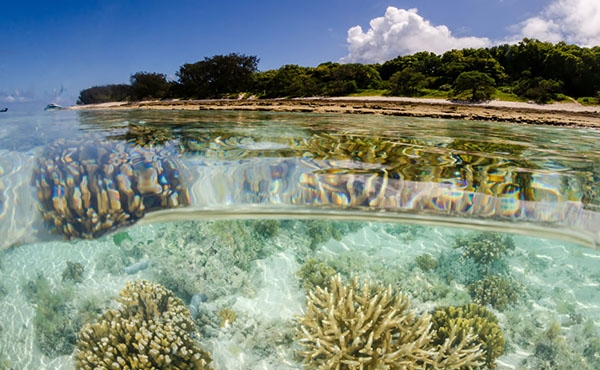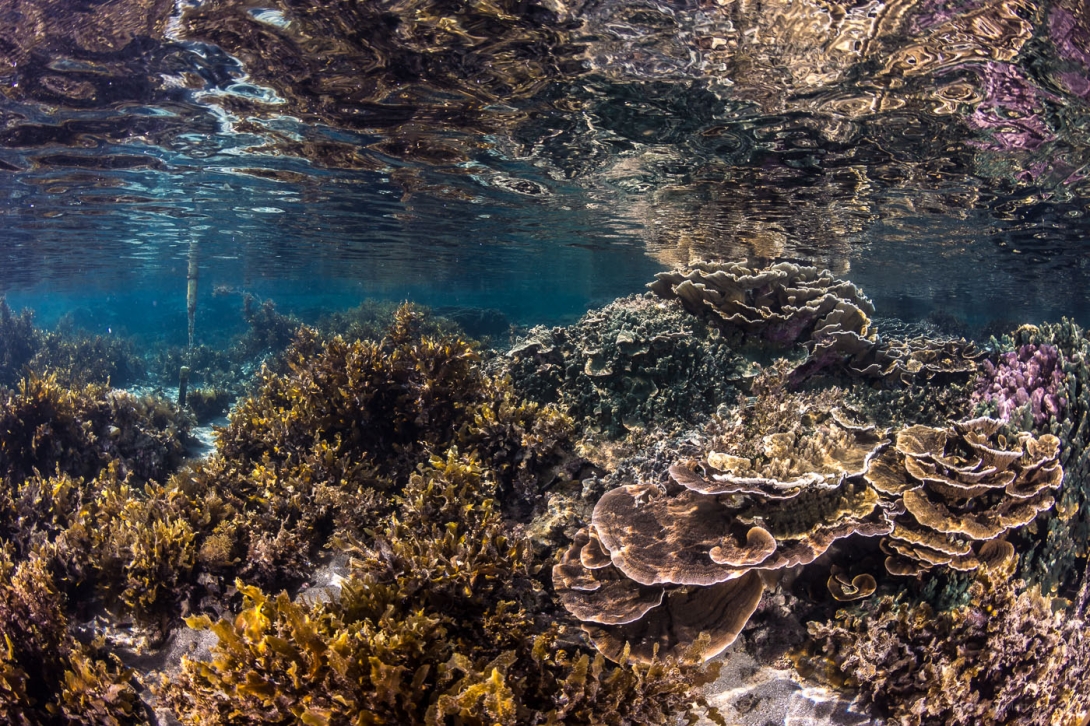190.
Thompson, A., Davidson, J., Logan, M. and Thompson, C. 2024, Marine Monitoring Program: Annual report for inshore coral reef monitoring 2022–23. Report for the Great Barrier Reef Marine Park Authority, Townsville.
323.
Stella, J.S., Munday, P.L., Walker, S.P.W., Pratchett, M.S. and Jones, G.P. 2014, From cooperation to combat: adverse effect of thermal stress in a symbiotic coral-crustacean community, Oecologia 174: 1187-1195.
902.
Kayal, M. and Adjeroud, M. 2022, The war of corals: patterns, drivers and implications of changing coral competitive performances across reef environments, Royal Society Open Science 9(6): 220003.
903.
Chadwick, N.E. and Morrow, K.M. 2011, Competition among sessile organisms on coral reefs, in Coral reefs: an ecosystem in transition, eds Z. Dubinsky and N. Stambler, Springer, Dordrecht, pp. 347-371.
904.
McCook, L.J., Jompa, J. and Diaz-Pulido, G. 2001, Competition between corals and algae on coral reefs: a review of evidence and mechanisms, Coral Reefs 19(4): 400-417.
905.
Hoey, A.S., McClure, E. and Sims, C. 2022, Coral reef ecology, in Coral Reefs of Australia: Perspectives from Beyond the Water's Edge, eds S.M. Hamylton, P. Hutchings and O. Hoegh-Guldberg, CSIRO Publishing, Collingwood, pp. 151–157.
906.
Rölfer, L., Reuter, H., Ferse, S.C., Kubicek, A., Dove, S., et al. 2021, Coral-macroalgal competition under ocean warming and acidification, Journal of Experimental Marine Biology and Ecology 534: 151477.
907.
Bieg, C., Vallès, H., Tewfik, A., Lapointe, B.E. and McCann, K.S. 2024, Toward a Multi-stressor theory for coral reefs in a changing world, Ecosystems 27: 310-328.
908.
Richardson, L.E., Graham, N.A.J. and Hoey, A.S. 2020, Coral species composition drives key ecosystem function on coral reefs, Proceedings of the Royal Society B 287(1921): 20192214.
909.
Johnson, M.D., Swaminathan, S.D., Nixon, E.N., Paul, V.J. and Altieri, A.H. 2021, Differential susceptibility of reef-building corals to deoxygenation reveals remarkable hypoxia tolerance, Scientific Reports 11(1): 23168.
910.
Wakwella, A., Mumby, P.J. and Roff, G. 2020, Sedimentation and overfishing drive changes in early succession and coral recruitment, Proceedings of the Royal Society B 287(1941): 20202575.
911.
Cresswell, A.K., Renton, M., Langlois, T.J., Thomson, D.P., Lynn, J., et al. 2023, Coral reef state influences resilience to acute climate-mediated disturbances, Global Ecology and Biogeography 33(1): 4-16.
912.
McDowell, N.G., Allen, C.D., Anderson-Teixeira, K., Aukema, B.H., Bond-Lamberty, B., et al. 2020, Pervasive shifts in forest dynamics in a changing world, Science 368(6494): eaaz9463.
913.
Staude, I.R., Weigelt, A. and Wirth, C. 2023, Biodiversity change in light of succession theory, Oikos 2023(11): e09883.
914.
Harvey, B.P., Kon, K., Agostini, S., Wada, S. and Hall‐Spencer, J.M. 2021, Ocean acidification locks algal communities in a species‐poor early successional stage, Global Change Biology 27(10): 2174-2187.
915.
Bonin, M.C., Boström-Einarsson, L., Munday, P.L. and Jones, G.P. 2015, The prevalence and importance of competition among coral reef fishes, Annual Review of Ecology, Evolution, and Systematics 46: 169-190.
916.
Matley, J.K., Heupel, M.R., Fisk, A.T., Simpfendorfer, C.A. and Tobin, A.J. 2017, Measuring niche overlap between co-occurring Plectropomus spp. using acoustic telemetry and stable isotopes, Marine and Freshwater Research 68(8): 1468-1478.
917.
Poulos, D.E. and McCormick, M.I. 2022, Prior residency improves the performance of a habitat specialist in a degrading environment, Coral Reefs 41(2): 423-433.
918.
Doll, P.C., Munday, P.L., Bonin, M.C. and Jones, G.P. 2021, Habitat specialisation and overlap in coral reef gobies of the genus Eviota (Teleostei: Gobiidae), Marine Ecology Progress Series 677: 81-94.



